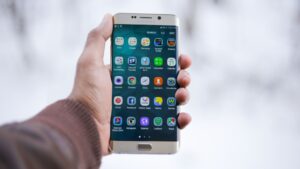In today’s digital age, personalizing your smartphone is more than just a way to stand out—it’s about creating an interface that feels like home. From vibrant themes to unique app icons, customizing the appearance of your apps not only enhances your user experience but also reflects your personal style. Whether you’re tired of the default look or eager to refresh your device’s aesthetic, altering how your apps look can be a fun and rewarding endeavor.
How to Change How Your Apps Look
Transforming how your apps look enhances not just their aesthetic appeal but also your overall interaction with your device. This section provides a detailed guide on personalizing app visuals.
Why Appearance Matters
 App appearance plays a critical role in how users perceive and interact with their devices. An appealing interface invites not only consistent usage but also improves familiarity and comfort with the technology. Mobile interfaces that resonate with a user’s style can turn regular interaction into a delightful experience. For instance, using calming colors and familiar icons can help reduce anxiety for users who may feel overwhelmed by complex app designs.
App appearance plays a critical role in how users perceive and interact with their devices. An appealing interface invites not only consistent usage but also improves familiarity and comfort with the technology. Mobile interfaces that resonate with a user’s style can turn regular interaction into a delightful experience. For instance, using calming colors and familiar icons can help reduce anxiety for users who may feel overwhelmed by complex app designs.
The Impact on User Experience
Customizing app appearance significantly enhances user experience by offering a more intuitive and personalized interface. Given that individuals interact with their mobile devices numerous times throughout the day, a visually pleasing and easy-to-navigate interface can make these interactions more enjoyable and efficient. Moreover, customized mobile interfaces cater to diverse user needs, including ease of use for those with visual impairments or preferences for certain color schemes for better visibility. Such adjustments ensure everyone can utilize technology comfortably and efficiently, improving user satisfaction and technology adoption.
Basic Steps to Change App Appearance
Changing the appearance of apps is a straightforward process that enhances both aesthetic appeal and user interaction. The guide below outlines the essential steps involved in customizing an app’s appearance, making it easy for users to tailor their smartphone experience to their preferences.
Accessing Settings and Options
-
 Locate the Settings Menu: Initiate changes by locating the settings menu on the device. For Android users, this usually involves tapping the gear icon in the app drawer or notification panel. iPhone users can find it by opening the “Settings” app typically located on the home screen.
Locate the Settings Menu: Initiate changes by locating the settings menu on the device. For Android users, this usually involves tapping the gear icon in the app drawer or notification panel. iPhone users can find it by opening the “Settings” app typically located on the home screen. -
Navigate to Display Settings: Once in settings, proceed to the display options, where various appearance-related settings such as brightness, text size, and screen timeout are found.
-
Explore App-Specific Settings: For customizing individual apps, find the app settings within the app itself, sometimes accessed via a menu represented by three dots or lines in the corner of the app screen.
Advanced Customization Techniques
Exploring advanced customization techniques allows users to further personalize the aesthetics and functionality of their app interfaces. This section delves into more sophisticated methods for changing how apps look, suitable for users who wish to take their customization skills to the next level.
Using Third-Party Apps for Enhanced Customization
 Third-party apps offer extensive options for modifying the appearance of smartphones. Apps like Nova Launcher for Android permit users to modify icons, layouts, animations, and more with granular control. If a user values comprehensive customization, third-party apps provide powerful tools and diverse themes that legacy settings menus do not offer. However, these apps often have a learning curve but reward the user with a highly personalized device interface.
Third-party apps offer extensive options for modifying the appearance of smartphones. Apps like Nova Launcher for Android permit users to modify icons, layouts, animations, and more with granular control. If a user values comprehensive customization, third-party apps provide powerful tools and diverse themes that legacy settings menus do not offer. However, these apps often have a learning curve but reward the user with a highly personalized device interface.
Implementing Custom Widgets and Icons
Custom widgets and icons serve as another approach to differentiate a user’s smartphone. Widgets such as KWGT Widget Maker on Android allow the creation of personalized widgets that can display a variety of data and blend seamlessly into the overall aesthetic of the home screen. Likewise, apps like CandyCons and Whicons provide a selection of unique icons that replace the default options. These tools require access to certain system permissions, but they significantly elevate the customization potential of the device.

